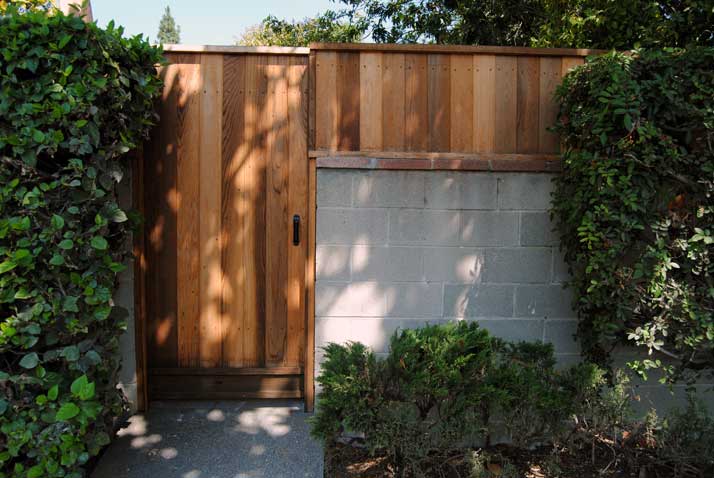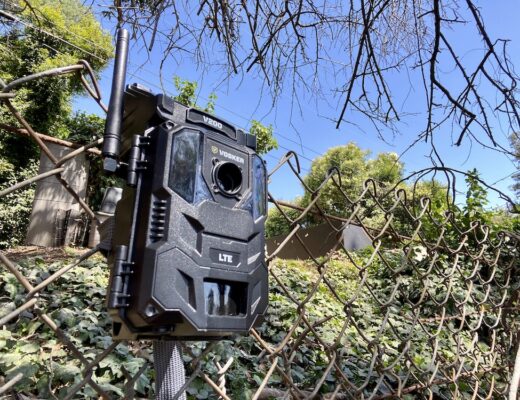
Floods are affecting communities across the country. Torrential rains and hurricanes have left cities in near ruin. We wrote this guide to help you deal with water damage after a flood in your own home.
From just a few inches to a few feet water can be terribly destructive. Not all is lost in a flood, but the number one concern when water is high is you check for danger before trying to save anything.
Check for Danger
Don’t turn a flood issue into a cardiac arrest issue. Before doing anything, ensure the damaged area is safe to work in. Your main concern is electrical danger. As you approach a water damaged area, check for light fixtures and/or appliances that may have been damaged before, during or after the flood event.
For example, let’s say a 2nd floor restroom floods, and causes the 1st floor ceiling to fall in. And let’s say there was a light fixture or ceiling fan on this ceiling. Chances are the weight of the wet material and water tore the fan/fixture right out of it’s housing when the ceiling collapsed. Be sure hot wires are not exposed as you begin to assess damage. If there is any risk of such shock exposure, immediately turn off the power to the building and safely resolve the danger.
Identify the Source
Water damage has three categories that identify the source of the damage.
- Category 1 – This water is clean, potable (drinkable) water. This is water coming from an overflowing sink or bathtub, or perhaps from a broken water supply line or a fixture shut-off valve. This is the preferred source should water damage occur. Category 1 water poses minimal risk of contamination or respiratory danger.
- Category 2 – This water is sometimes called “gray” water. It is certainly not drinkable but not full of sewage, either. Examples of Category 2 water are dishwasher run-off or washing-machine run-off. These sources contain soap and/or food contaminants but not raw sewage.
- Category 3 – This water, sometimes called “black” water, is highly contaminated. It contains bacteria or chemicals harmful to touch, consume or inhale. Category 3 water must be removed by a professional with proper immunizations and personal protective equipment. Examples of Category 3 water are any type of sewer back-up, water that has run across open ground before entering the structure, or anything related to a chemical spill.
Stop the Source
If the water is Category 1 or 2, your next step is stopping the source. (If Category 3, wait for a professional since exposure to contaminants is likely.) Be sure you know where your main shut-off valve is for your homes water supply and test it yearly to ensure proper function. If your leak is coming from an appliance or fixture with a shut-off valve upstream, turn this valve off instead of the water to the entire building.
If a large amount of sewage is coming out of a drain line continuously there is a blockage in the sewer line or the municipal sewer system is malfunctioning in your entire neighborhood. Immediately call your city’s waste water department and report the issue. They need to respond immediately to prevent the flow of sewage.
Prevent Further Damage
- Furnishings – Immediately relocate furnishings immersed in water or sitting on damp flooring. This is especially important for wood furnishings, or those that have a stain finish prone to bleeding. Nothing ruins carpet quicker than bleeding, wet furniture. Also, furnishings made from wood composite, like MDF, will swell quickly when exposed to water, and are impossible to dry to their original look and strength.
- Wall Coverings – Once the furnishings is out of the way, inspect the walls. If water has wicked up the drywall or plaster, immediately remove baseboard and/or wainscoting or wall-coverings. Water gets trapped behind these items and creates a barrier to drying, not to mention a great spot for mold growth. (Speaking of mold, it begins to grow on porous surfaces after 48-72 hours of dampness. If you encounter mold, cease your demolition and hire an expert. This is especially critical if you have children, seniors or those with medical conditions in your home. Do not disturb the mold, as this releases spores into the air. More on this in a future post.) If no mold is encountered, I recommend leaving the drywall in place. It may be salvageable.
- Flooring – Once furnishings are removed and wall-finishes are stripped to drywall, it is time to address the flooring. As a general rule, carpet and cushion (pad) damaged with Category I water can be cleaned and salvaged. Carpet cushion damaged by Category II water needs to be disposed of, but the carpet can be sanitized and salvaged. Flooring damaged by Category III water needs to be disposed of immediately and the slab or subfloor treated with anti-microbial chemicals. Leave this to the experts. It takes proper training to safely remove flooring damaged to this extent.
Set-up for Successful Drying
Drying a water damaged building is a science. It requires knowledge and tools most homeowners rarely need. I highly recommend contacting a restoration company to assist with moderate to heavy drying.
Should you encounter light water damage, and should you follow steps 1-4 above, here are a few tips for drying:
Place floor fans approximately 12′ along the room(s) perimeter, pointing the air flow in a clockwise direction. This creates a vortex with the air, pushing the air to the outside of the room. If you have access to a dehumidifier, place it on the perimeter of the room to capture this moisture. Be sure to run the condensate line from the dehumidifier to a drain or out of the building. Releasing the condensation into a bucket in the room just creates more moisture in the room and slows drying.
If you had a Category 1 loss, and the carpet is wet, pull it from the tack strip and attempt to blow air under the carpet if possible. Light damage should dry overnight using this method.
Be safe as you attempt any from of water damage restoration. If in doubt, call a restoration company to assist with your project. Reputable restoration companies have great equipment and knowledge to assist you in getting your home back in working condition. If you must do-it-yourself, though, the steps above will help minimize the damage and get your home back to normal quickly.
What to Salvage
Let’s start with the easy diagnosis, category 3 water. Remember, category 3 water has either sewage or toxic chemical potential. This includes not just raw sewage, but water from a source of raw sewage. For example, a toilet overflow from the bowl, even if the water in the bowl was “clean” just prior to the overflow, should be treated as category 3 because the source of the contamination. Think about it this way: no matter how clean water sitting in a toilet might be, you likely would not add Kool Aid to it and mix it up for a nice summer drink, right?
Salvaging After Category 3 Water Damage
When category 3 water damage occurs, all porous surfaces should be removed with full personal protective equipment on (we’ll look at this equipment in a subsequent post). Drywall, carpet, carpet pad, insulation, baseboard, wood flooring, rugs, furnishings, etc. You name it. It should be discarded.
Now, if you have an antique rug from the 1650’s worth more than our national debt, you of course would try to save it by hiring a restoration company specializing in textiles. But if the products are not unique, they should be tossed. It’s for the safety of your family.
Non-porous materials, like tile, concrete, plumbing fixtures, etc. can be cleaned with a standard biocide cleaner and left in the home. You may want to get a relatively strong biocide from a janitorial supply company. When using such products, be sure to follow the use label on the product explicitly. Not doing so can harm the occupants of the home and is also illegal.
Salvaging After Category 1 and 2 Water Damage
In contrast to category 3 water damage, salvaging materials after category 1 or 2 water damage depends on the actual damage to the material, not necessarily the contamination to the material. In essence, you are concerned more about the finished product rather than endangering the occupants.
Guidelines for Salvaging Materials
- Carpet – Remove and replace carpet pad, attempt to re-use carpet. Note: Category II water, which could have soaps and dirt in it, may stain carpet permanently, but it may be worth trying to dry it and clean it first.
- Wood Flooring – Water damage to wood flooring is very difficult to assess. As a very general rule, true natural wood floors can sometimes be saved by very experienced and qualified restoration companies, and usually at great cost. Engineered wood floors are usually permanently damaged by water and must be replaced. The ability to salvage wood floors is a topic of much debate in the restoration community.
- Baseboard – If baseboard was removed and drying started immediately after damage occurred, baseboard may be salvaged. If baseboard was an engineered material, like MDF, even minimal exposure to moisture will cause it to swell. No saving swollen MDF. If your baseboard was natural wood, you may have a chance to save it if you act fast.
- Cabinets – Cabinets pose a unique challenge after a flood. On one hand, they can often be salvaged when dried correctly. On the other hand, drying under a cabinet is challenging. The best method is to remove standing water from the area, remove baseboard covering the toe-kick, drill ~1″ diameter holes in the toe-kick every 12″ or so, and try to get air circulation under the cabinet. Most restoration companies have special adapters for their blowers that direct air into these holes. If there is a chance the drywall behind the cabinet was saturated, you will need to remove the cabinets to prevent mold-growth on the walls.
- Drywall and Plaster – Like baseboard, early intervention is key. Drywall and plaster can absorb a small amount of water and be successfully dried. For drywall, if the paper is wet but the gypsum inside has not started to degrade, you are probably ok to salvage it. If the paper is saturated and the gypsum is starting to turn mushy, you are likely too late.
- Insulation – Batt insulation should be removed and replaced even if just a little wet. It’s highly absorbent and a breeding ground for mold if not completely dried. Since this requires drywall removal from at least one side of the wall, basically any flooding that comes above the sill plate of an insulated wall will require removal and replacement of both drywall and insulation.
- Wallpaper – No luck here, has to be replaced.
- Rugs – Can usually be cleaned by a professional cleaner, but you want to evaluate the value of the rug versus the cost of cleaning.
- Sheet vinyl – Very hard to dry, and usually better off removing and replacing. Sheet vinyl will delaminate and discolor even months after water damage. Since it’s usually a cheap material, better to just replace.
- Furniture – Depending on when you catch the damage, most furnishings can be saved. Be sure to get the furniture up off the ground as quickly as possible to facilitate drying and reduce the odds of mold growth.
Flood Insurance
All flood insurance is provided by The National Flood Insurance Program, a federal government agency.
Although flood insurance consumers benefit because insurance prices are consistent throughout the country, this also means the NFIP is entirely reliant on Congress’ ability to keep the NFIP active, which is something they’ve struggled with especially during times of heavy legislative activity.
The U.S., Puerto Rico and Virgin Islands are all eligible for NFIP coverage, and unlike other types of insurance, flood insurance agents can write coverage nationally.
For more information about flood insurance, including coverage for homeowners, renters and condo owners, visit Floodsmart.gov.
Check FEMA’s flood zone map to determine if you’re in a special flood zone, although most claims are paid out for buildings that are not located in these zones. If you’re not in a special zone, coverage should cost around $400 or less per year, although an authorized agent can give you an exact quote.
Water Damage After a Flood Can be Overcome
Fortunately insurance can cover larger losses and items can be replaced, but sentimental value is tough to put a finger on and many times water damage after a flood can destroy priceless items.
But, these types of disasters can be overcome. Just remember you don’t have to do things in one day, one week, or even a few months. Take your time and you’ll be back.



